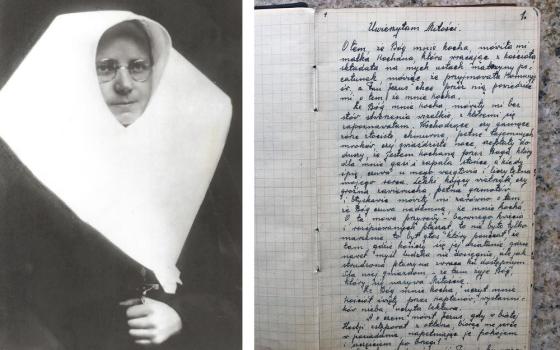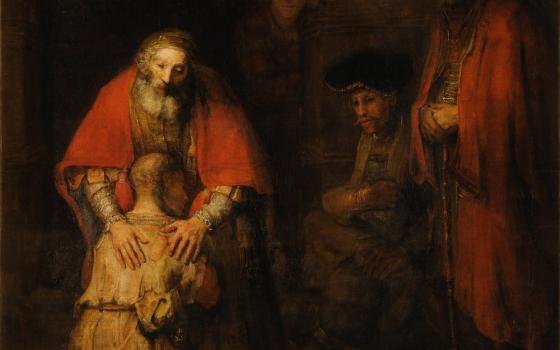Today marks the 50th anniversary of the close of the Second Vatican Council. Compared to the four sessions of the council, nothing else was more significant in the entire twentieth century life of the Church. It would take a year of blog posts to share my thoughts upon the council, but today I would like to look at the reception of the council over the past fifty years and touch on what I perceive as some of the major challenges in the on-going reception of that seismic, historic and grace-filled event. A book, actually several books, could be written on this topic too, but what follows are some of the highlights.
Conciliar documents, and the same could be said for the written constitution of a state, are not self-interpreting documents. I recently received a book on Vatican II’s Declaration on Religious Freedom, Dignitatis Humanae, by David Schindler and Nicholas Healy, Jr., that carefully examines the developing drafts of that important text, and also offers an interpretation of why the drafts changed in each iteration, as well as an interpretative essay about how we should understand the final document. The Schindler-Healy view is quite different from the Murray view, and in the main I tend to side with Schindler. Earlier this fall, Bishop Daniel Flores of Brownsville have a keynote address at a Notre Dame conference on Dignitatis Humanae and he roped in the thought of Jacques Maritain to explain his thoughts on the correct meaning of the highly ambivalent word “freedom.” And, in addition to textual analysis of the document itself, and relating that one text to the many others issued by the Council, the issue of religious liberty is subject to change because it is lived in different cultures and at different times, with different threats to human dignity and to the rights of the religious believer manifesting themselves. In sum, Vatican II did not so much “settle” large issues like religious liberty, but pointed the Church in a direction.
There is much debate about what that direction is. In his famous 2005 address to the curia, Pope Benedict XVI forcefully spoke against the “hermeneutic of discontinuity” that he said had held too much sway in interpreting the work of the Council in the intervening 40 years. He proposed, instead, a “hermeneutic of reform,” which contains elements of both continuity and discontinuity. He did not, repeat did not, argue in that speech for only a narrowly construed “hermeneutic of continuity.” no matter how many times my conservative friends say that he did.
What does a hermeneutic of reform look like? Let us examine Dei Verbum, the Dogmatic Constitution on Divine Revelation. As biblical scholar Fr. Ronald Witherup demonstrated in his recent book The Word of God at Vatican II: Exploring Dei Verbum, the decree has elements of continuity with the decrees of the Council of Trent, the First Vatican Council, Pope Leo XIII’s encyclical Providentissimus Deus, and Pope Pius XII’s encyclical Divino Afflante Spiritu. So, the continuity was there. But, so was the discontinuity, most especially in the admonition that the Word of God be made widely available to, and read by, the lay faithful: “Access to sacred scripture ought to be widely available to the Christian faithful,” the text states at Paragraph 22. My parents’ generation had been warned against consulting the Bible when they were growing up.
Some of my conservative friends have been citing Dei Verbum recently in their effort to frustrate any change in the way the Church ministers to the divorced and remarried. They like Paragraph 10: “This magisterium is not superior to the word of God, but is rather its servant. It teaches only what has been handed on to it.” I like that paragraph too. But, they fail to note that Dei Verbum is, pardon the expression, religious about its use of the singular when it employs the noun “truth.” And, it cautions against treating the Bible as a source of proof texts, insisting that each passage be read in the context of the whole canon, a point that was further reiterated in the post-conciliar Catechism which instructs “Be especially attentive ‘to the content and unity of the whole Scripture.’’ (Paragraph 112) When a preacher intones, “Well the Bible says…” head for the hills.
We could go through almost every conciliar text and find elements of continuity and discontinuity. Vatican I proclaimed papal infallibility and Vatican II highlighted episcopal collegiality. Pius XII silenced those advocating religious liberty and Vatican II championed the cause. Henri de Lubac was silenced in the wake of Humani Generis, but he exercised one of the most profound influences on the Council. But, most people do not go through the texts, carefully scrutinizing what the Council taught. Sadly, many seminarians seem less interesting in these texts than they do in reading Chesterton!
I discern one major mistake in interpreting Vatican II that we associate with the Catholic left and one that we associate with the Catholic right.
The left tended to pick up a few key phrases – “the people of God” and “sensum fideilium” – and run with it. It is unfortunate, in retrospect, that the council occurred at the same time as the rise of survey data. Many on the left forgot that Vatican II said nothing that could be understood as denying the hierarchic structure of the Church. Instead of reform, they embraced innovation. I am reminded on what Edmund Burke wrote in Letter to a Noble Lord: “It cannot at this time be too often repeated, line upon line, precept upon precept, until it comes into the currency of a proverb, - To innovate is not to reform.” If you doubt there was a kind of iconoclastic frenzy in some circles, let me bring you to some once beautiful old churches that had their interiors destroyed and made ugly in the post-conciliar era. Something similar happened in the life of the mind: Venerable, long standing practices and beliefs were thrown aside by the ecclesial equivalents of the Jacobins. Academic theology, for reasons unrelated to the Council, entered a period in which hyper-specialization within the guild prevented much needed thinking about the large, central issues addressed by the Council. Some even became allergic to the idea of dogma, accepting a kind of indifferentism that is obviously not supported by anything the Council decreed.
The right came to replace the complex teaching of the Council with whatever St. Pope John Paul II said about it. Obviously, as the Supreme Pontiff of the Church, his long pontificate took great strides in applying and interpreting the Council, and much of what he wrote was exceedingly beautiful. Sometimes, regrettably, a tone of defensiveness, even a reactionary sensibility, creeped into his writings and talks. In making sense of St. John Paul II’s teachings and those of his successor Pope Benedict XVI, we see a narrowing of the Catholic imagination the Council hoped to nourish. Our Communio friends rightly note that St. Pope John Paul II cited Gaudium et Spes #22 more than any other conciliar text: “The truth is that only in the mystery of the incarnate Word does the mystery of man take on light….” But, the rest of the Catholic right has utterly failed to wrestle with this key insight for understanding the Council, which was taken almost word for word from de Lubac, and has profound and unpleasant implications for the theological dualism that is the staple of much conservative thought.
Both the Catholic Left and the Catholic Right should apply to the Council, and the subsequent papal magisterium, the approach the Council took to the interpretation of Scripture. Instead of cherry picking a line here and a thought there, to make a point arrived at for ideological reasons, the conciliar texts, and the conciliar spirit, must be taken as a whole, and the isolation of proof texts ended. This will take work, as the synod’s efforts to reconcile our understanding of indissolubility and mercy took work. And, the central call of the Council to return to the sources, the writings of the Early Church Fathers, to re-discover the wonder that characterized the early Christian community, that call must further permeate our theology, catechesis and evangelization. Fifty years on, we are still receiving the teaching of the Council.
Pope Francis often jokes that he is not a theologian. But, if the central, really all-encompassing dynamic at Vatican II was the influence of ressourcement theology, returning to the sources, in which people were still in wonder at the stupendous claims about the supernatural made by Jesus of Nazareth, Pope Francis has, in his own way, directed the Church to a return to The Source, Jesus Christ. Of course, in their own ways, all four other popes since the Council have done this too, but Francis seems to be able to communicate the kerygma more effectively, in word and gesture, than any pope in my lifetime. He does not let theological niceties distract us from the core of our faith. He acts with a freedom that astounds and has more than a little whiff of the first apostles about it. He is living the Council’s call to recapture the wonder of our faith and not to get bogged down by the syllogisms of the theologians and the canonists. It is not only refreshing, although it is that. Francis is embodying the “New Evangelization” in ways that capture the spirit of the first evangelization. The joy in his voice and on his face during today’s Angelus captured that sense of wonder we find in the early Church, yet he is obviously, insistently, aware of our own times and the demands they make upon the Church. Francis is, in this sense, a true pope of the Council.



